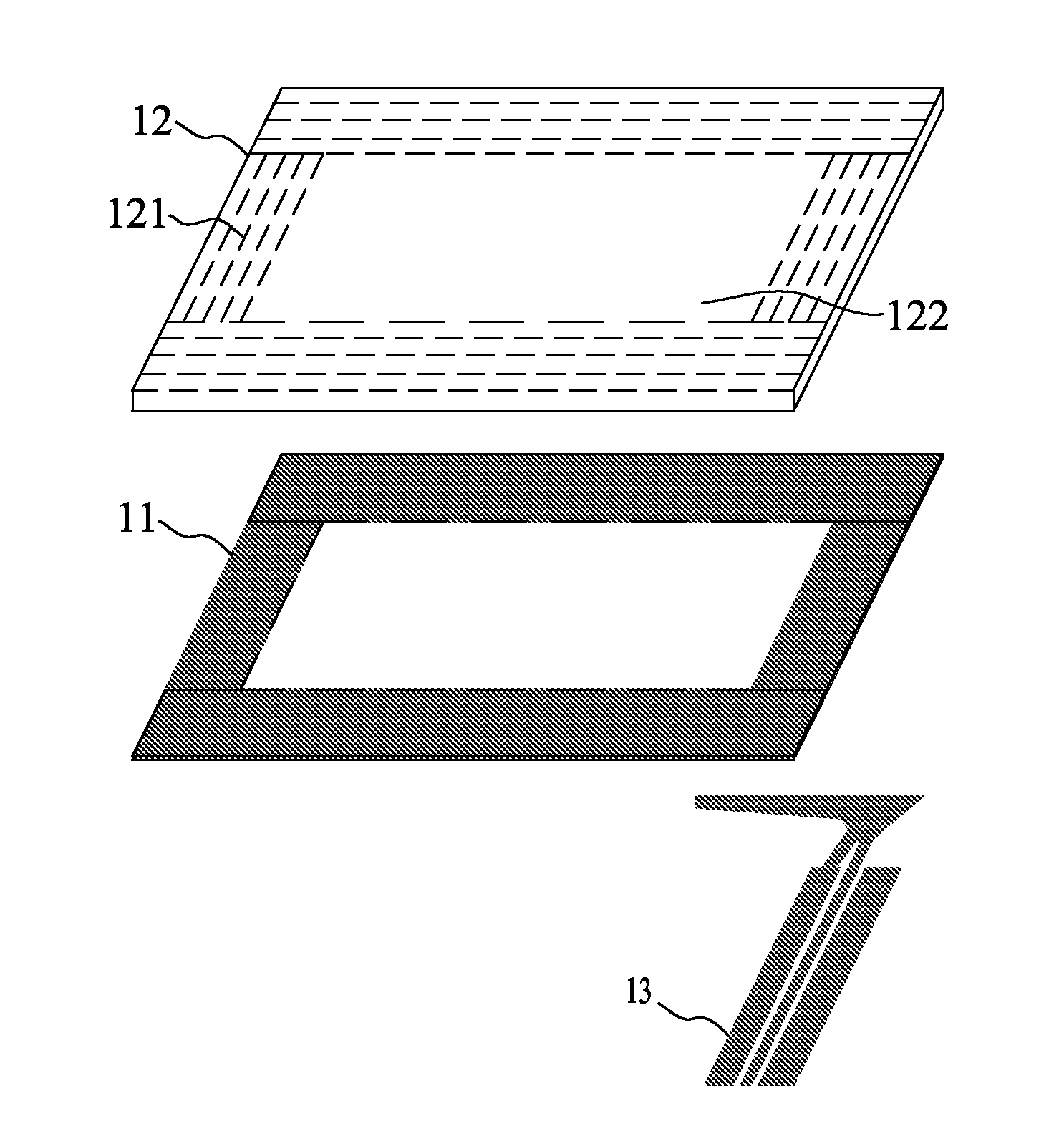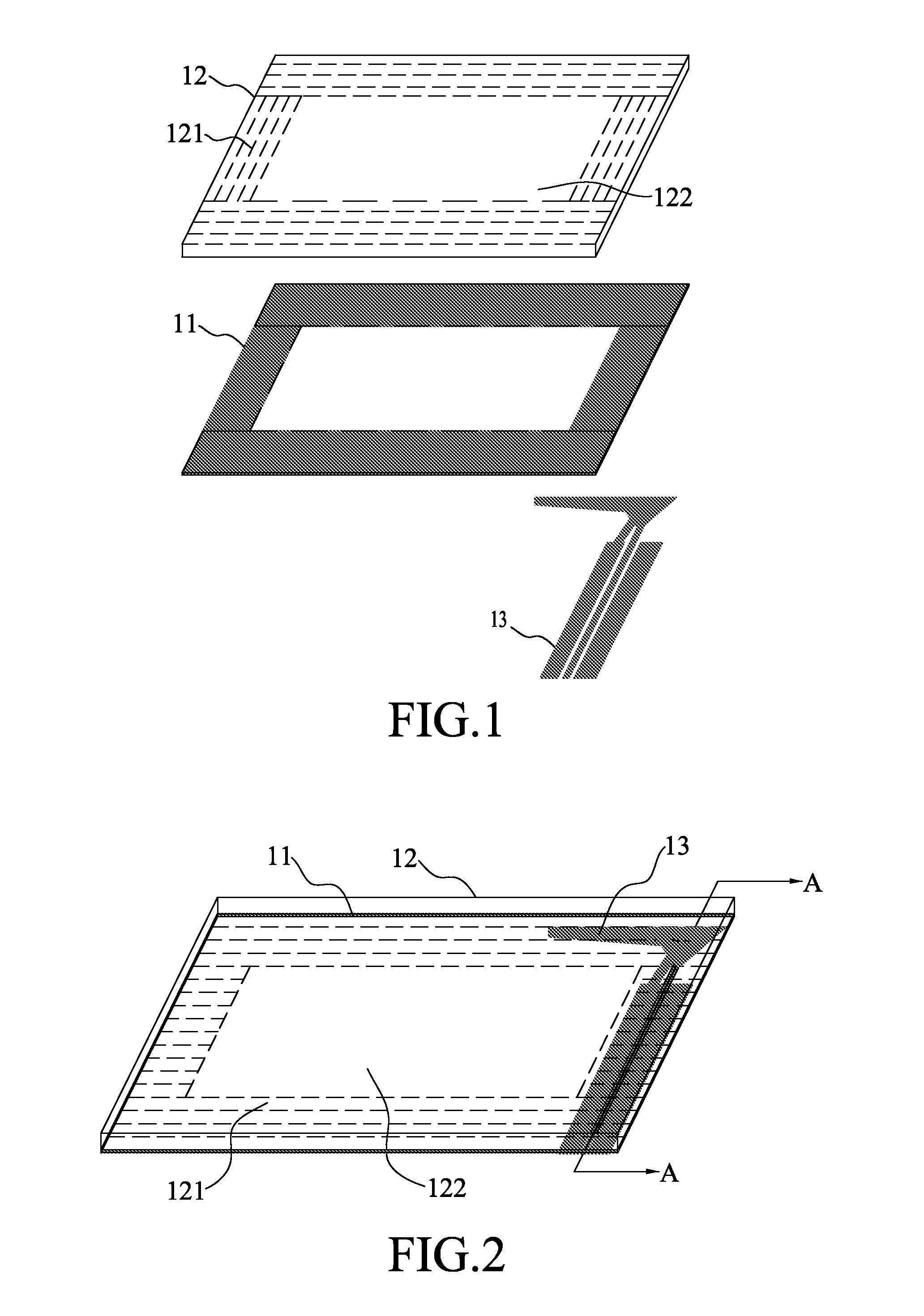Printed Antenna
a technology of printed antennas and antennas, applied in the field of printed antennas, can solve the problems of increasing material costs and raising defective fractions, and achieve the effect of widening the application field
- Summary
- Abstract
- Description
- Claims
- Application Information
AI Technical Summary
Benefits of technology
Problems solved by technology
Method used
Image
Examples
Embodiment Construction
[0017]Refer to FIG. 1 and FIG. 2 respectively a perspective exploded view and a perspective assembly drawing schematically showing a printed antenna according to a first embodiment of the present invention. The printed antenna of the present invention comprises an ink-printed layer 11, a hard substrate 12 and a radiation conductor layer 13. The surface of the hard substrate 12 includes a non-transparent area 121 and a transparent area 122, and the non-transparent area 121 surrounds the transparent area 122.
[0018]In fabricating the printed antenna of the present invention, a high-viscosity black ink is uniformly coated on the non-transparent area 121 to form the ink-printed layer 11 encircling the hard substrate 12. The hard substrate 12 is a non-metallic transparent plate, such as a glass plate, an acrylic plate or an LCD panel. Thus, the transparent area 122 of the hard substrate 12 can function as the display screen of an electronic device. Next, a conductive ink is coated on the ...
PUM
 Login to View More
Login to View More Abstract
Description
Claims
Application Information
 Login to View More
Login to View More - R&D
- Intellectual Property
- Life Sciences
- Materials
- Tech Scout
- Unparalleled Data Quality
- Higher Quality Content
- 60% Fewer Hallucinations
Browse by: Latest US Patents, China's latest patents, Technical Efficacy Thesaurus, Application Domain, Technology Topic, Popular Technical Reports.
© 2025 PatSnap. All rights reserved.Legal|Privacy policy|Modern Slavery Act Transparency Statement|Sitemap|About US| Contact US: help@patsnap.com



